Issue 3
Afrotectopia: Building Community at the Intersection of Art, Design, Technology and Activism

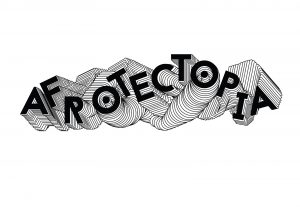
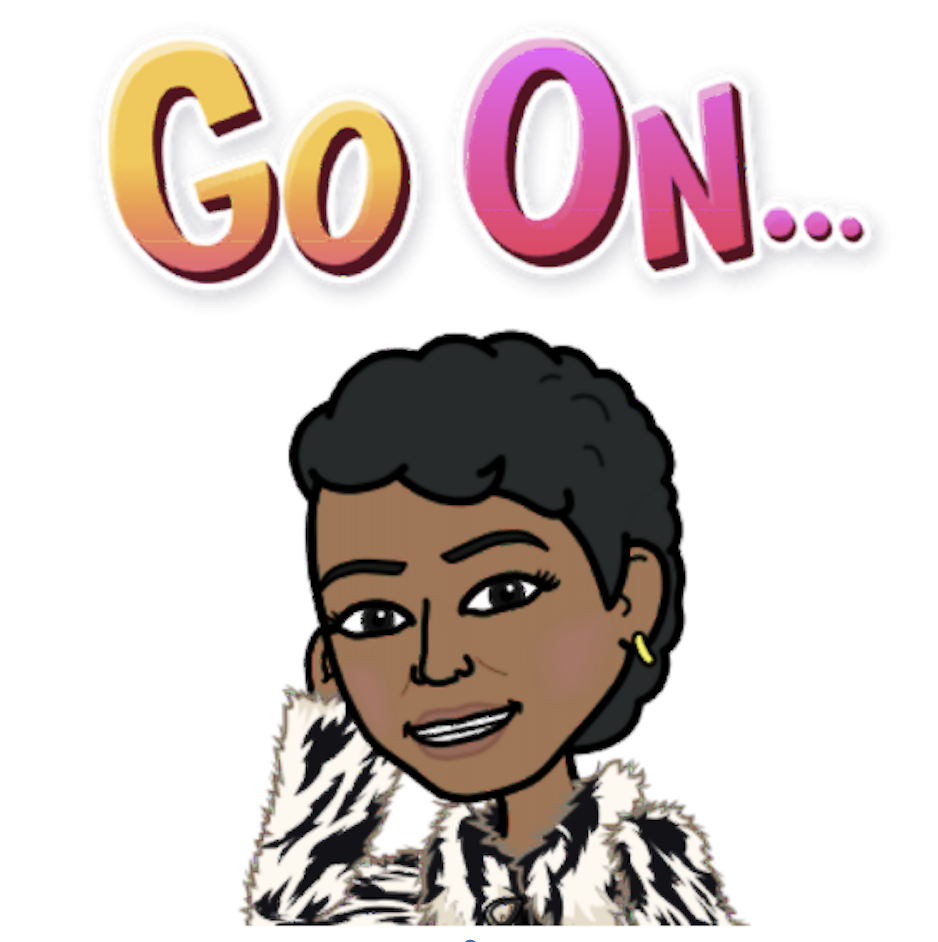
Quick History of Systemic Racism in America
In the United States of America, about 13% of the population is Black/African descent1. Yet, in the country’s biggest tech companies, less than 5% of the staff are Black2, with an even smaller portion of that staff actually developing the technology3,4. In public education, statistics show a clear correlation between having larger proportions of Black and Latino students within the schools’ demographics with less advanced courses like computer science and high level maths being offered. And in today’s racial wealth disparity, White households have 20 times more wealth than Black households5.
Systemic racism is designed to benefit a certain community by actively oppressing another. Each of these issues stem from different forms of systemic racism — uplifting White communities while oppressing Black and Brown communities. This can be observed in the exclusion of qualified Black employees in technical jobs, the inequity within the public school system, and the Jim Crow era and New Deal that allowed for 98% of home mortgages to be exclusively given to White Families6 – creating huge barriers for wealth accumulation within the Black community. And in 2018, the ripples of these various forms racism can still be seen everywhere, even if those in power have started to realize that they are part of the oppressive system.
At New York University’s Interactive Telecommunications Program (ITP), there are about 230 students, with only 4% of those students being Black or of African descent. New York University is located in lower Manhattan, where 20% of the demographics are Black/African. This drastic racial underrepresentation isn’t an issue exclusive to ITP or NYU, but the entire country, as well. Regardless of the causes for systemic racism, it must be a priority of all parties to combat it and seek inclusion, immediately.
Why was Afrotectopia created?
In the range of interviews conducted between me and different outlets as they prepared to publish stories on Afrotectopia, I was often met with the question, “Why now?” As if the creation of Afrotectopia stemmed from the current disastrous political climate and “new-found” racism within America.

To be frank, Afrotectopia was created purely out of my personal experience. As a Black woman and an Afro-Latina in the tech world, and most specifically as a graduate student at ITP, my experience has been one of many highs but also many lows in ways I wasn’t prepared for. My transition from a predominately Black and well-off hometown blinded me to the realities of the rest of the world, where communities like mine were rare and where racial representation was not nearly as common in the Black experience. My entrance into the technology space exposed me to a variety of forms of systemic and computational racism (computational by means of algorithms and how the bias used as they were developed can produce severe marginalization – such as sentencing algorithms or computer visions inefficiency in recognizing darker complexion faces). I quickly recognized immense levels of inequality and opportunity for continued and subliminal marginalization within the capabilities of tech and the developers of these technologies, and I often found myself having to speak up for the entire Black and Latino community, during my classes. It was uncomfortable, exhausting and disheartening.
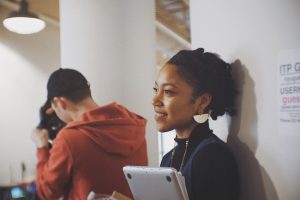
Founder and producer of Afrotectopia, Ari Melenciano.

While I was enamored by the incredibly moving and immersive possibilities of the creative technology world that ITP so effectively showcased to me, I also recognized a deep sense of privilege that I was afforded in becoming a member of these powerful and small communities, that were also often neglectfully doing a disservice to communities that look like me. I found it unacceptable. I imagined spaces where I would no longer be the only Black person having to speak up for my entire community, but amongst a sea of many incredible Black innovators using technology for social impact.
With Afrotectopia, I had several different goals. For one, I wanted to build a programming at NYU that announced to the local community and rest of the world, that we, at NYU, value and are committed to discussions around race and activism when considering technology. I wanted Black prospective students to be able to identify themselves within NYU and feel welcomed. Lastly, I wanted to create a space and build a community of Black innovators working somewhere along the lines of art, design, technology and activism so that we could communicate with one another, disseminate information and opportunities, teach, learn and build together. I found all of these spaces and messages missing before the creation of Afrotectopia, yet believed it to be crucial that it exists.
Another common question in the interviews was, “Why art, design, technology, activism and Blackness all together, in one festival?”

Illustration by Ari Melenciano
The combination of these different avenues of life were intended to create a space that produced implementable systemic change with innovative and culturally sound insights. Artists have the ability to see the world as it can be, in favor of humanity; designers understand how to implement art into complex structures for seamless interactions and operations; technologists understand algorithms and how they can impact society; activists understand social justice issues and ways to combat oppression; and Black people continue to live in a world that suppresses their agency, criminalizes their existence, as well as actively creates barriers for their successes, still, in 2018. It only made sense to combine these different ways of thinking to holistically discover opportunities for effective systematic change for the Black community.
Recap of Afrotectopia
[tribulant_slideshow gallery_id=”1″]


We opened doors to Afrotectopia on March 10th and 11th. More than 250 predominately Black creatives working at the intersections of art, design, technology, activism and Blackness attended the inaugural new media arts, culture and technology Afrotectopia festival, held at New York University’s Interactive Telecommunications Program.It was a truly moving weekend. And during the two day long event, we had a variety of different activities and and opportunities to provoke visionary thinking and explore ways to use technology in the favor of Black communities to create more equitable futures. Activities held throughout the event included: an opening ceremony of welcoming speeches from chair of ITP, Dan O’Sullivan, myself, and Associate Vice President for Student Affairs and Diversity Initiatives, Monroe France; opening performances by Jaycee Holmes (ITP’18), and music artist, Ehiorobo; 6 different panels; a collection of 9 different skill sharing workshops, demos, performances, and a screening of a Sundance winner film with interview of the creator and director; a pop-up museum filled with exhibitions exploring new media arts in expressing Black and African culture; 9 lightning talks, 10 different think tank sessions, a keynote and closing ceremony from the notable Vy Higginsen and the Sing Harlem Choir, along with catered breakfasts, snacks, lunches and an evening reception for all guests. The weekend was jam-packed.
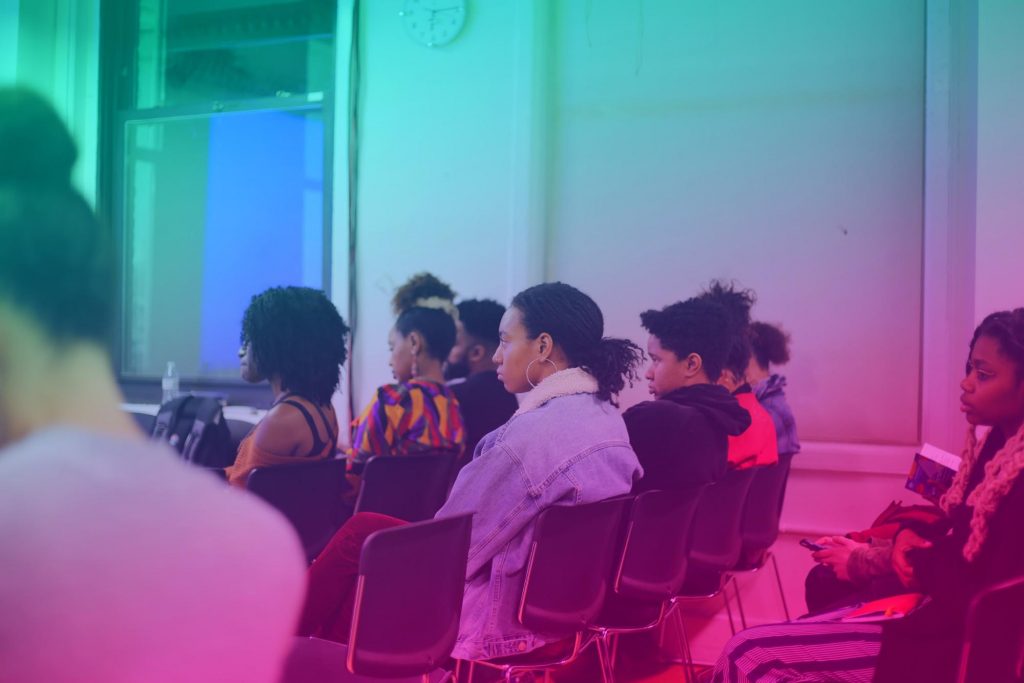
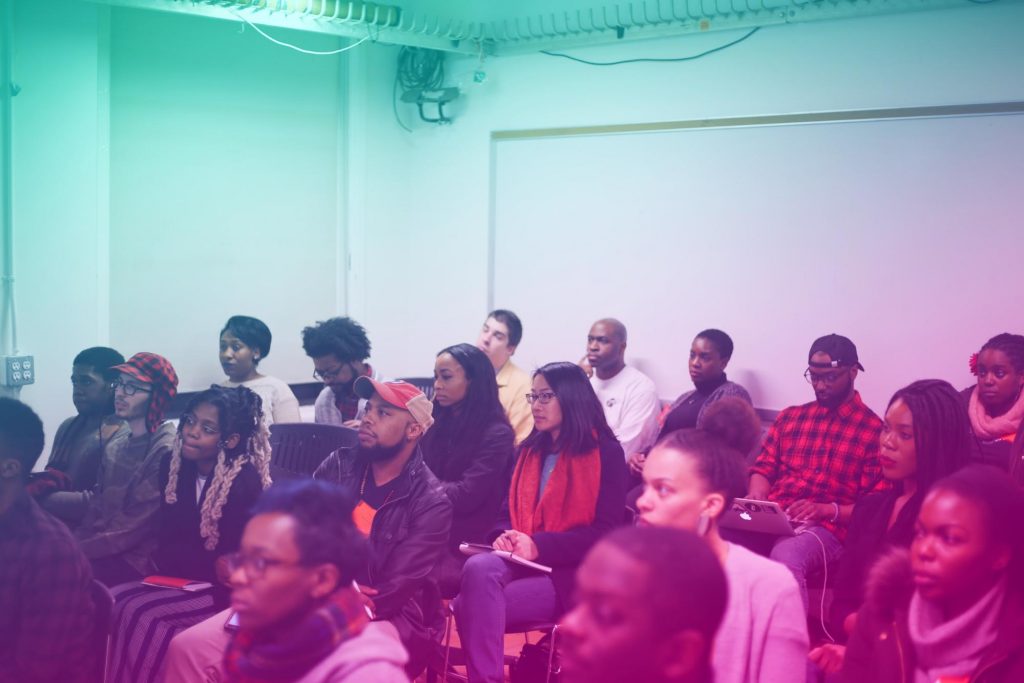
The weekend was filled with engaging conversations and dialogue

With space being limited, we created an application for prospective attendees. It was exciting to see that a week before doors opened, Afrotectopia was entirely sold out. At the time of the event, there were over 500 applicants, over 100 people added to the waiting-list and close to 100 people signing up for the mailing list. It was clearly affirmed that the space Afrotectopia was bringing to New York City, was necessary.
Afrotectopia’s intentions included educating, catering to, and connecting the Black community. But another major priority of the event was to invest and uplift the Black community, monetarily. We’re excited to share that with the funds raised for Afrotectopia, about $12,000 went to Black/POC owned businesses and creatives, and $5,000 was used to build an Afrotectopia Scholarship for an incoming Black ITP student.
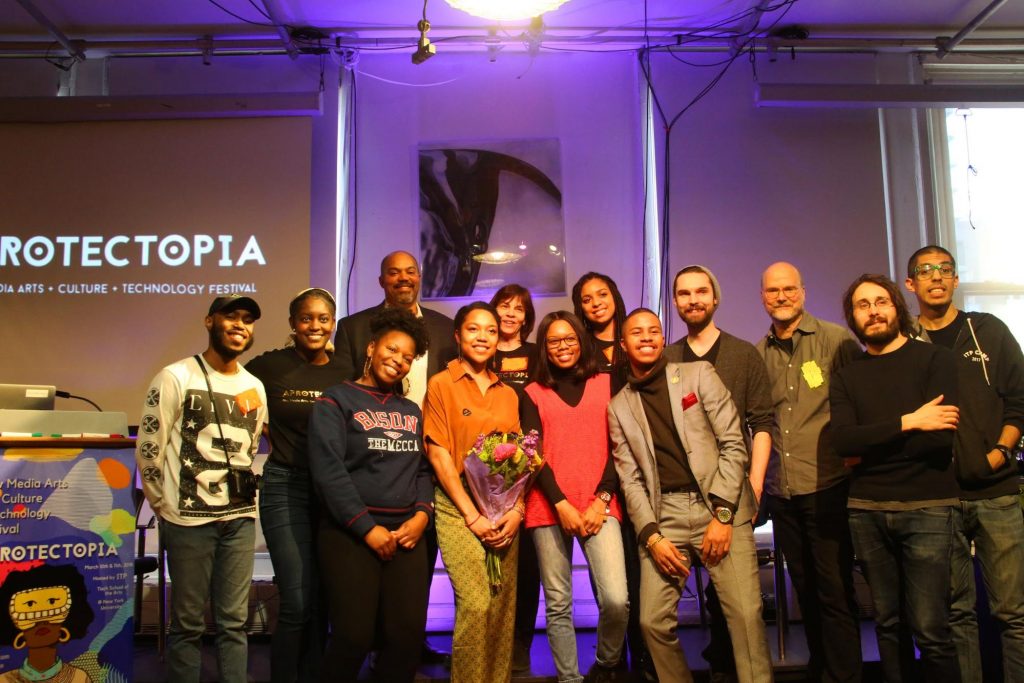
Organizers and volunteers of Afrotectopia. From left to right: Emir Fils-Aime, Cadence Daniels, Gabrielle Artis, Garikai Campbell, Ari Melenciano, Nancy Hechinger, Stephanie Chambers, Sandra Manzanares, Terrick Gutierrez, Dominic Barrett, Dan O’Sullivan, Aaron Parsekian, Sejo Vega-Cebrian (not pictured, Jaycee Holmes, Luna Olavarria Gallegos, Nikita Higgins, Sonali Sridhar, Alicia Singham Goodwin, Virgina de los Santos and Dania Reyes)
The event was created and produced by Ari Melenciano (ITP’18). Co-organizers of the event included Jaycee Holmes (ITP’18), Sejo Vega-Cebrian (ITP’18), Stephanie Chambers (ITP’19), Terrick Gutierrez (ITP’19), Luna Olavarria Gallegos (ITP’19), Sandra Manzanares (Gallatin’18), Emir Fils-Aime (Tandon’18) and Cadence Daniels (Tandon’18). The event was sponsored by Google, ITP, Facebook, Kickstarter, Etsy, Foursquare, NYC Media Lab, Processing Org and a variety of different departments within New York University.
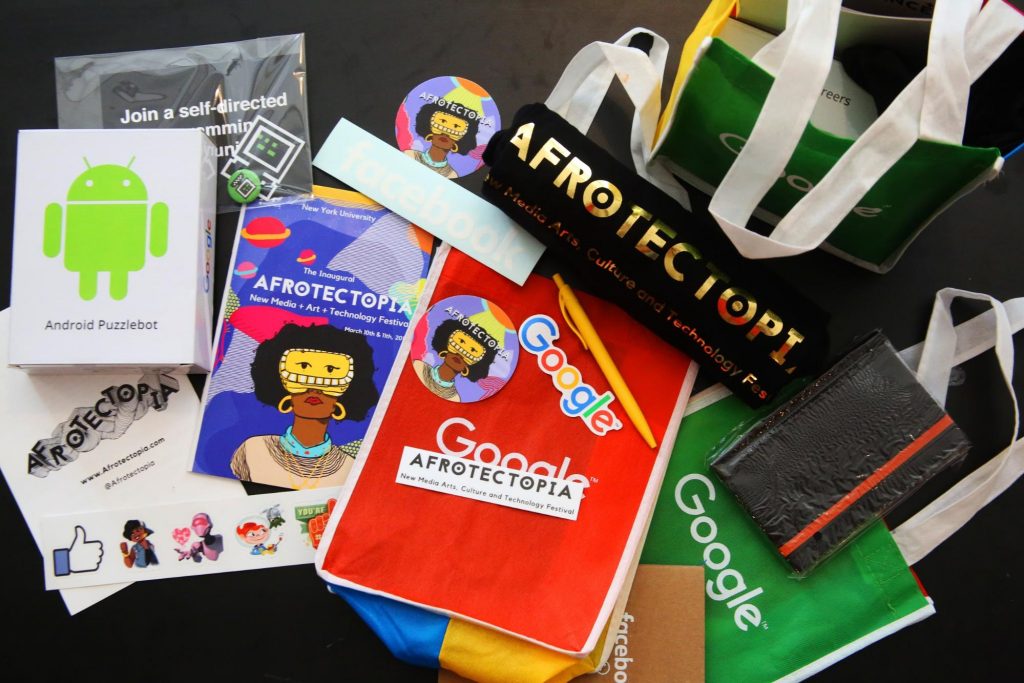
Contents of the Afrotectopia swag bag
